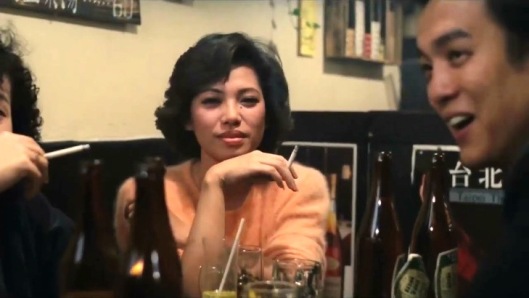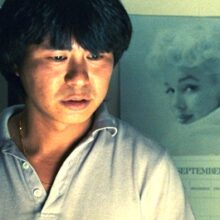

Edward Yang’s second feature, about a couple in crisis because of their different responses to changing conditions in Taipei, was a breakthrough for Taiwanese cinema.
Taiwanese director Edward Yang showed a willingness to take risks in his short films, and in his first feature, That Day on the Beach, from 1983. Two years later, in 1985, he released Taipei Story, putting all his money into the project. It failed at the box office, while getting some recognition at international film festivals. Despite its less than spectacular showing, it marked the beginning of a new era in Taiwanese film. Up until then, movies in Taiwan were derivative of Hollywood commercial formulas. Yang fashioned a unique style of his own that created the conditions for a “new wave” of cinema in Taiwan.
Taipei Story opens with a woman and a man looking at an apartment for rent. Chin, played by a popular singer of the time, Tsai Chin, looks the part of a sophisticated businesswoman, with her chic outfit and sunglasses. Lung, played by Hou Hsiao-hsien, wears casual clothes and seems thoughtful, distant. They act like just friends, so it takes some time before we discern that they are in fact childhood sweethearts going through a troubled period, verging on estrangement.
Chin wants to rent an apartment, it turns out, because she’s tired of living with her parents, especially her father, a crooked gambler and drunk who treats her mother like a slave. But Lung, who clings to an old-fashioned sense of honor and filial piety, makes friends with the man and even lends him money, which infuriates Chin. The conflict between inherited cultural traditions and rapid difficult changes in society due to modernization in Taiwan is a central theme of the film, yet not explicitly stated. Yang’s approach respects the audience’s ability to perceive things without them being explained.
Yang’s friend Hou Hsiao-hsien, already a productive filmmaker in his own right, helped him write the screenplay along with Chu Tʻien-wen, who would go on to help write most of Hou’s films. Yang also tapped Hou to play the male protagonist, Lung, a brooding, mistrustful character, disillusioned after briefly working in Los Angeles and finding that it felt just as alienating as Taipei. With Hou’s performance, and his participation in the script, Taipei Story feels essentially like a Yang-Hou collaboration, a fitting breakthrough for what would be the two most important directors in Taiwan.
But it’s Tsai Chin, as a woman struggling to overcome doubts and create a new separate life of her own, who is the soul of the movie. She’s beautiful, but her performance doesn’t lean into that. There’s no concession to glamour. Chin has lost her job because her mentor has quit and there’s no place for her in the company. She acts confident, but she seems sad and preoccupied. She finds herself drawn to a former co-worker and ex-lover, an architect. There’s a choice scene where the two of them look out from a skyscraper above the city, and the architect bemoans the development of Taipei, to which he’s contributed.
There are many long and mid-range shots in which the streets, houses, buildings, and rooms are presented with spatial clarity. The characters move visibly within these spaces rather than being presented with close-ups and background. Yang’s was a new kind of style, and the film’s effects are both complicated and precise. The intent is to see people as part of a larger picture, an environment, and this environment is a major factor. In Taipei Story, the title indicates not only a story in the city, but of it.






